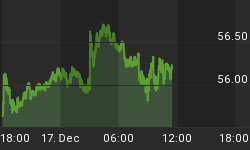Leadership Provides Insight Into Market's Tolerance for Risk

Supply and demand is a simple and powerful concept. When investors are confident about future economic outcomes, they gravitate toward growth-oriented and higher beta ETFs. When investors are concerned about the economy and earnings, demand for conservative assets, such as consumer staples and bonds, begins to increase. There is a reason monitoring the big picture was included in the Four Ways To Improve Your Investing Game article; it helps us stay properly allocated between stocks and conservative assets.
Demand For Banks Sides With Stock Bulls
While markets can rally with banks lagging, all things being equal we would prefer to see a healthy financial sector (XLF) during a market advance. The sector got a boost from Bank of America (BAC) Wednesday. From Bloomberg:
Bank of America jumped 2.4 percent after the second-biggest U.S. lender reported fourth-quarter earnings and revenue that beat analysts' estimates. Apple Inc. gained 2.5 percent after China Mobile Ltd. said pre-orders for iPhones had reached 1 million. Regeneron Pharmaceuticals Inc. declined 3.6 percent amid an analyst downgrade.
The demand for financial assets has remained strong enough to propel the sector to new highs. When the chart below morphs into a look similar to point A, our concerns about the general market will increase.

Subdued Inflation Pressures
Central banks tend to maintain easy-money policies until inflation rears its ugly head. While Wednesday's report was highlighted by higher gas prices, the Fed should not be overly concerned with the current inflation figures. From Reuters:
U.S. producer prices recorded their largest gain in six months in December as the cost of gasoline rebounded strongly, but there were few signs of any sustained price pressures. Even with the latest rise, however, prices at the wholesale level were up only 1.2 percent from a year-ago, suggesting a continued lack of pressure on the prices consumers pay. "We are still seeing very subdued inflation pressures. The type of economic growth we see in 2014 is likely to lead to a slow normalization in consumer prices, not a fast one," said Laura Rosner, an economist at BNP Paribas in New York.
Fear Not Showing In Consumer Staples
As described in this video clip, many institutional money managers must stay fully invested all the time. Therefore, they often overweight defensive consumer staples stocks when they are concerned about future economic and market outcomes. We last referenced the chart below on December 27; it continues to align with a bullish or "risk-on" environment for investors. The three steps confirmed a bearish reversal in consumer staples relative to the S&P 500 Index.

Investment Implications - Staying Long Until Evidence Shifts
After Monday's equity selloff, we reduced our exposure to stocks in an incremental manner noting:
Incremental risk reduction admits "we could be wrong here", meaning if buyers step in at the trendline below, we still have exposure to stocks, just not as much as we had last Friday.
The trendline and chart we referred to after the close Monday is below.

As you can see below, buyers did step in near the blue trendline and stocks rallied.

The small incremental change to our allocation allowed us to enter Tuesday's session with a still significant exposure to stocks, permitting us to participate in the big gains Tuesday and Wednesday. The market's risk profile continues to call for equity exposure. Consequently, we continue to maintain positions in U.S. stocks (VTI), financials (XLF), technology (QQQ), small caps (IJR), Europe (FEZ), and global stocks (VT).















